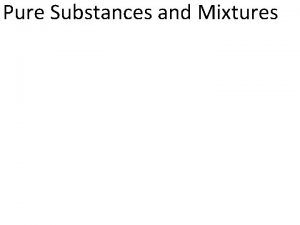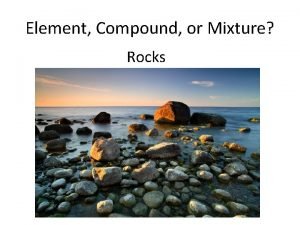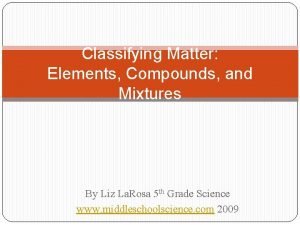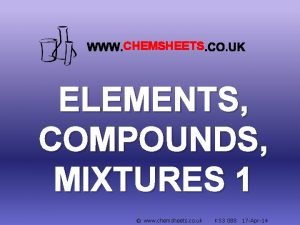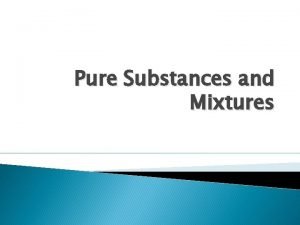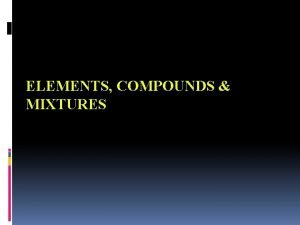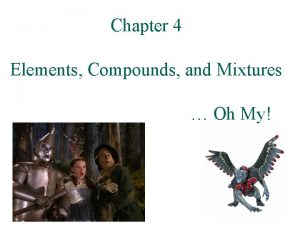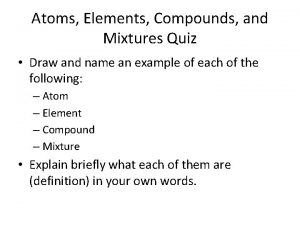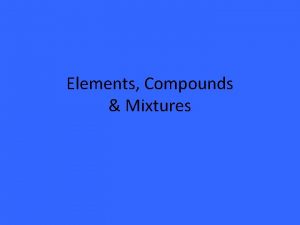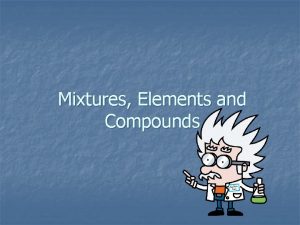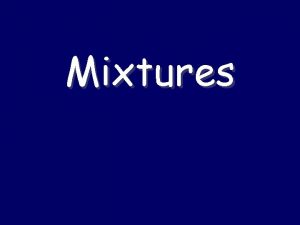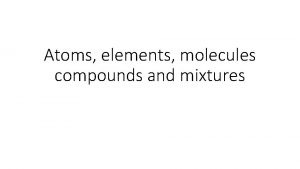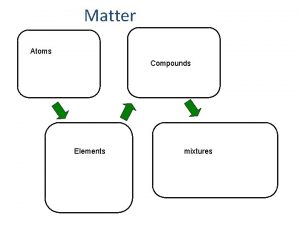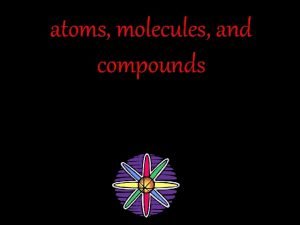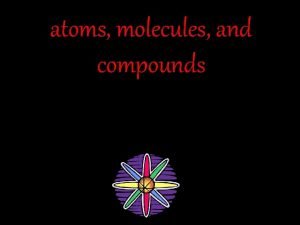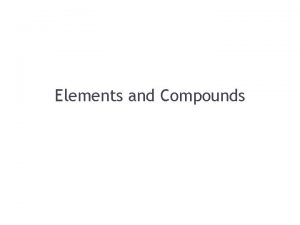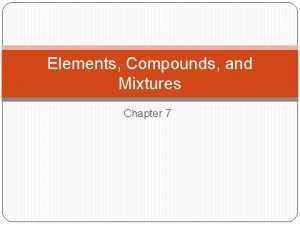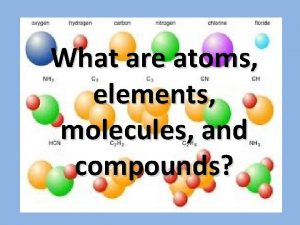Atoms Elements compounds mixtures molecules YEAR 8 TERM














- Slides: 14

Atoms, Elements, compounds, mixtures & molecules YEAR 8, TERM 1 2017

Atoms & Elements 2500 years ago a teacher named Democritus who lived in ancient Greece developed theory that the world was made up of tiny particles (which he called “atomos” = unable to be divided). 2400 years later we now know them as atoms Each element is made of its own particular kind of atom. For example; Gold only contains gold atoms, carbon only contains carbon atoms and so on. But what makes atoms different from each other?

Inside the Atom • • Atoms are made up of 3 subatomic particles: Protons – positively charged particles found in the nucleus (centre) Neutrons – neutral particles found in the nucleus “glue” Electrons – negatively charged particles found orbiting the nucleus. Each element has a specific number of protons (called its atomic number) – this is how individual atoms are distinguished from other atoms . • E. g.

Elements Each element has its own atomic number (= number of protons in its nucleus) and can be found on the periodic table. Elements are represented by a chemical symbol. e. g. C – Carbon, O – oxygen, Au - gold The periodic table organises all known elements in groups and rows based on their atomic number and common features. – we will look at these more next lesson.

Elements and the Periodic Table Each element on the periodic table has it’s own place which tells you some information about the element. Atomic Number = number of protons Number of protons = Number of electrons Atomic Mass = the average mass of each element

Elements cont. . The naturally occurring elements are the building blocks of everything in our world (both living and non-living, including you!) It is the way that the different atoms join (bond) together that makes all the different compounds in our world. Because elements contain all of the same type of atom they can be represented diagrammatically as the same coloured shape, bonded or not bonded to other atoms of the same element.

The Photographic Periodic Table http: //www. periodictable. com/

Compounds Substances in which the atom(s) of one element are bonded to the atom(s) of another element. More simply – different types of elements joined together. The elements that make up a compound are completely different from the compound. E. g. salt Can be represented diagrammatically as different shapes or coloured shapes joined together. . E. g. Carbon dioxide, water

Compounds – Chemical Formula Compounds are written as chemical formula e. g. Na. Cl, H 2 O, CO 2 Chemical formula indicates the type of elements in the compound and how many of each type of atom make up that compound. It is a shorthand way of writing for chemists.

So what is a Molecule? A molecule is a group of two or more atoms that stick (bond) together. They can be pure elements or compounds. It is the simplest structural unit of an element or compound. Molecule of an element e. g. O 2 Molecule of an compound e. g. H 2 O

Mixtures Are made up of two or more elements, two or more compounds or a combination of elements and compounds but they aren’t all bonded together. The substances that make up mixtures can usually be easily separated from each other (i. e. without a chemical reaction). E. g. soft drink, sand

Some Common Substances

Summary

Practice – Laptops needed Chemical mix-up game - match Elements, Compounds, and Mixtures Go to the website above Enter your name Click on start Drag the item into the correct category Correct response earns points Need to earn 700 points to pass level one Try to pass level one and have go at level two
 Mixture of compounds diagram
Mixture of compounds diagram Is maple syrup a homogeneous mixture
Is maple syrup a homogeneous mixture Pure substances and mixtures worksheet answers
Pure substances and mixtures worksheet answers Is a rock a element compound or mixture
Is a rock a element compound or mixture Elements compounds and mixtures
Elements compounds and mixtures Types of matter elements compounds and mixtures
Types of matter elements compounds and mixtures Elements compounds and mixtures ks3
Elements compounds and mixtures ks3 Mixtures images
Mixtures images Compound and mixture
Compound and mixture Elements compounds and mixtures oh my
Elements compounds and mixtures oh my Elements compounds and mixtures quiz
Elements compounds and mixtures quiz Chemistry in biology section 2 chemical reactions
Chemistry in biology section 2 chemical reactions Chapter 6 chemistry in biology
Chapter 6 chemistry in biology Chapter 6 section 1 atoms elements and compounds
Chapter 6 section 1 atoms elements and compounds Organic molecules vs inorganic molecules
Organic molecules vs inorganic molecules


